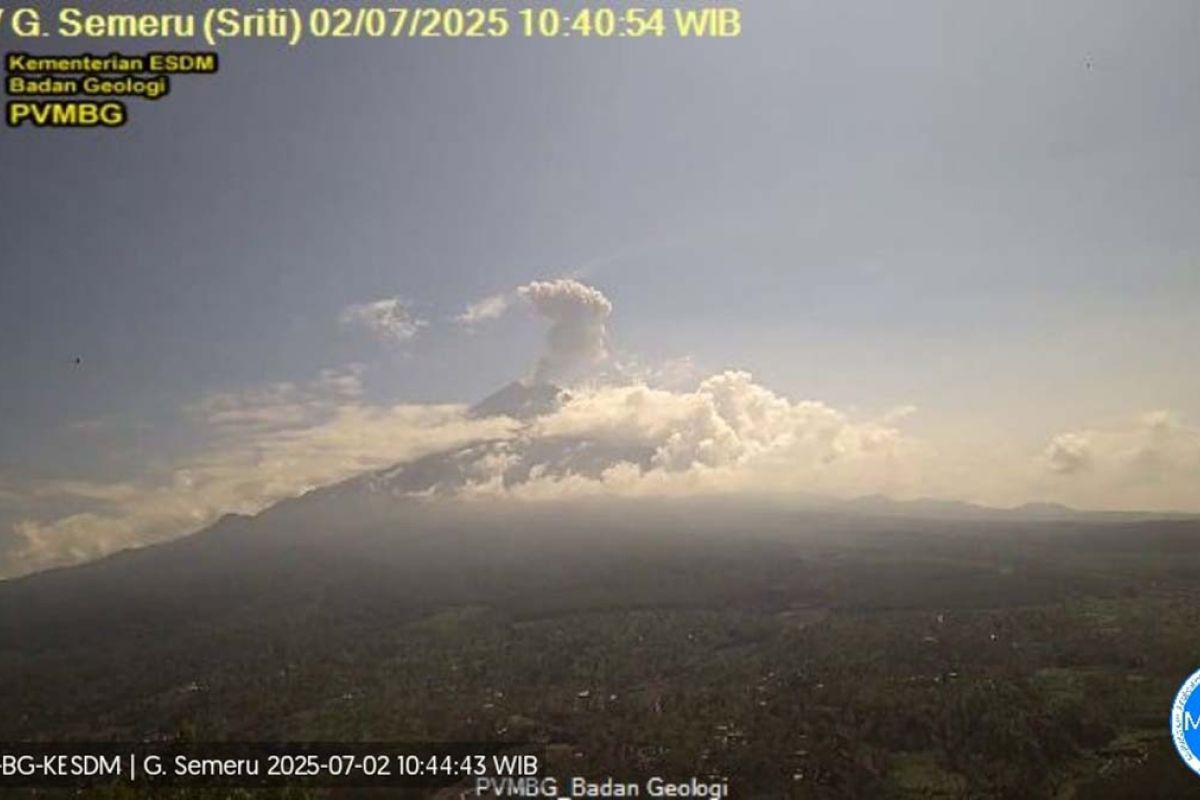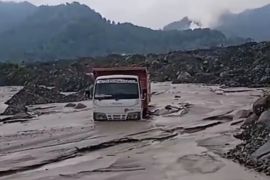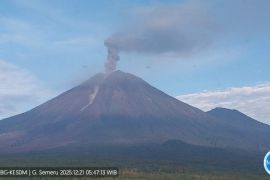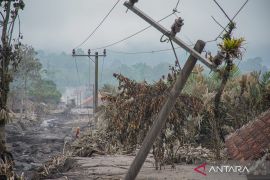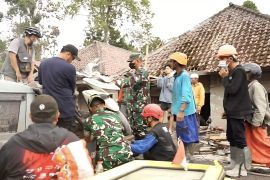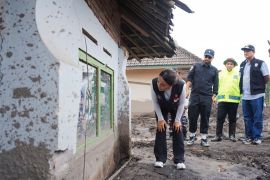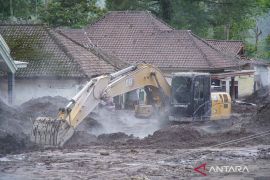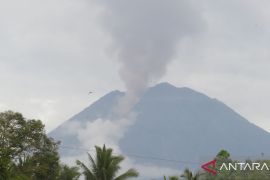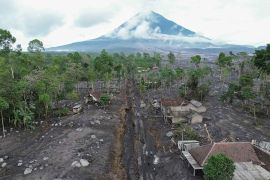"Mount Semeru erupted at 10:37 WIB with an eruption column height observed at 1,000 meters above the peak or around 4,676 meters above sea level (masl)," said Mount Semeru Observation Post Officer, Mukdas Sofian, in a written report received in Lumajang.
According to him, the ash column was observed to be white to gray with thick intensity, drifting toward the north and northeast.
The eruption was recorded on a seismograph with a maximum amplitude of 22 mm and a duration of 234 seconds.
Based on officer data, the mountain with a height of 3,676 meters above sea level has been recorded to have erupted seven times on Wednesday since 00.21 a.m local time with no visual eruption observed, followed with eruptions at 00.32 a.m, 00.54 a.m and 01.08 a.m local time. The visual eruption of the fourth eruption not visually observed.
The fifth eruption occurred at 07:00 a.m. with an ash column rising 700 meters above the peak, followed by another eruption at 07:55 a.m. with the same height. The seventh eruption at 10:37 a.m. produced an ash column 1,000 meters above the peak.
Mukdas said that Mount Semeru remains at Alert status, so the Center for Volcanology and Geological Hazard Mitigation (PVMBG) has issued several recommendations. The public is prohibited from any activity in the southeast sector along Besuk Kobokan for up to 8 kilometers from the peak (the center of the eruption).
Beyond that distance, the public is urged to avoid activities within 500 meters of the Besuk Kobokan riverbank, as this zone is susceptible to hot clouds and lava flows that can expand up to 13 kilometers from the peak.
The public is also advised not to conduct activities within a radius of three kilometers from the crater/peak of Mount Semeru due to the risk of ejected incandescent rocks.
He further said that people should be aware of the potential for hot clouds, lava avalanches, and rain-triggered lahars along rivers and valleys whose water originates from the peak of Mount Semeru, especially along Besuk Kobokan, Besuk Bang, Besuk Kembar, and Besuk Sat, as well as the potential for lahars in small tributaries of Besuk Kobokan.
Related news: Mount Semeru in East Java erupts five times
Related news: Mt Semeru experiences another eruption spewing volcanic ash
Translator: Arie Novarina
Editor: M Razi Rahman
Copyright © ANTARA 2025
